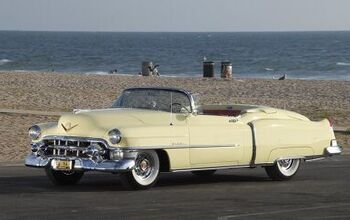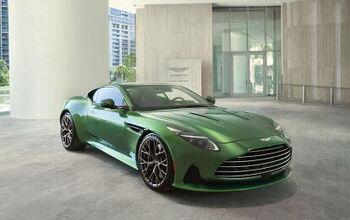Nissan Looks Ready to Bring E-Power to Its American Fleet

There’s no confirmation just yet, but all signs are pointing to the eventual introduction of Nissan’s novel e-Power hybrid system in its U.S. lineup.
We say “novel” because the system isn’t like any gas-electric setup currently on the road. Think of it as a way to cheaply reduce emissions without the worries of limited electric range or the expense of bulky battery packs. Instead, think of the car as a little ship.
Many Western navies field frigates and destroyers with integrated electric propulsion (IEP), meaning a diesel engine or gas turbine acts as a generator to power the ship’s electric motors, with no mechanical connection between the propellers (think drive wheels) and the fossil fuel-burning powerplants.
That’s essentially how Nissan’s e-Power system operates, only with the generator’s juice entering a small battery before reaching the electric motor. Launched in Japan last year in the Versa Note hatchback, the e-Power system uses a 1.2-liter three-cylinder that hums along at 2,500 rpm. There’s no plug-in capability, and the car’s battery is one-twentieth the size of that found in the company’s first-generation Leaf.
However, because electric motors generate maximum torque from a standstill, the Note e-Power isn’t as much of a slouch as other small cars.
Automotive News has now spotted two e-Power Notes — one a U.S. model, the other right-hand drive — plying the roadways of Michigan with two hybrid competitors in tow. Earlier this year, a Nissan executive said e-Power would be a good fit outside of Japan, with the automaker ready to position it alongside more expensive conventional hybrids and electrics.
The selling point of e-Power is as much about price as it is about fuel economy. Sure, it’s not as stingy at the pump as some compact hybrids (Japan rates it at 77 mpg, to the Prius hybrid’s 96 mpg), but its simple method of operation means it can undercut the competition in sticker price. With a new Leaf bowing for 2018, having e-Power at the bottom of the lineup would bolster Nissan’s growing green cred.
[Image: Nissan]

More by Steph Willems
Latest Car Reviews
Read moreLatest Product Reviews
Read moreRecent Comments
- Jalop1991 expensive repairs??? I've heard that EVs don't require anything that resembles maintenance or repair!So let me get this straight: as EV design and manufacture technology, and as battery technology, improves over time, the early adopters will suffer from having older and ever-rapidly outdated cars that as a result have lower resale value than they thought.And it's the world's obligation to brush their tears away and give them money back as they realize the horrible mistake they made, the mistake made out of some strong desire to signal their virtue, the mistake they could have avoided by--you know--calmly considering the facts up front?Really? It's Tesla's obligation here?If Tesla continued to manufacture the Model 3 (for example) the same way it did originally when the Model 3 was introduced, Tesla would not have been able to lower prices. And they wouldn't have. But they invested heavily in engineering in order to bring prices down--and now the snowflakes are crying in their cereal that the world didn't accommodate their unicorn dreams and wishes and wants and desires.Curse the real world! How dare it interfere with those unicorn wishes!
- Canam23 I live in southwest France and I am always surprised at how many Teslas I see on the road here. Mind you, I live in a town of 50k people, not a big city so it does seem unusual. On the other hand I also see a lot of PT Cruisers here (with diesel engines) so there's that...
- Slavuta Union....
- Paul Alexander The Portuguese sports car.
- Bd2 I hope they are more successful with Hyundai. Quality and ATPs only stand to improve with solid union support.


































Comments
Join the conversation
Spent a few years on diesel electric submarines and am only surprised that it took so long. I have no insight on why gas versus diesel probably $s are involved. I always bring up the "amazing 75mpg car" that you can find in mother earth magazine archives or just google using the words in quotes. The concept is so simple that I did a class project along that line while still in the working world. Have been a Nissan/Toyota fanboi for years. Glad they are both going to be in the mix.
I've wondered for years if this might be the most sensible configuration. The actual hp you use, averaged over time, is pretty low. It just doesn't take that much power to push a car through the atmosphere at a constant speed - maybe 20 hp for a small car at highway speed. So in theory all you need is an engine that can do a little better than that (divided by the conversion efficiency to electricity, maybe 0.9..it's pretty good) to drive a generator, and a battery big enough to help you up slopes and during acceleration. No mechanical connection between engine and wheels, just a simple electric motor and very simple transmission. High efficiency at low cost. And no range anxiety unless, say, you are traversing a mountain range!